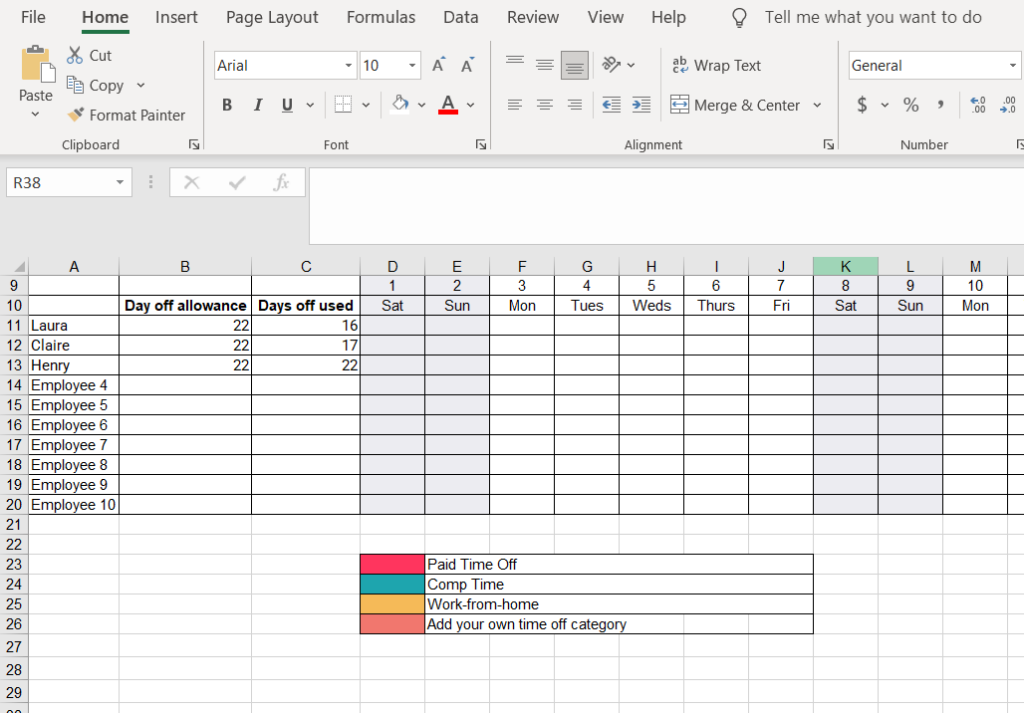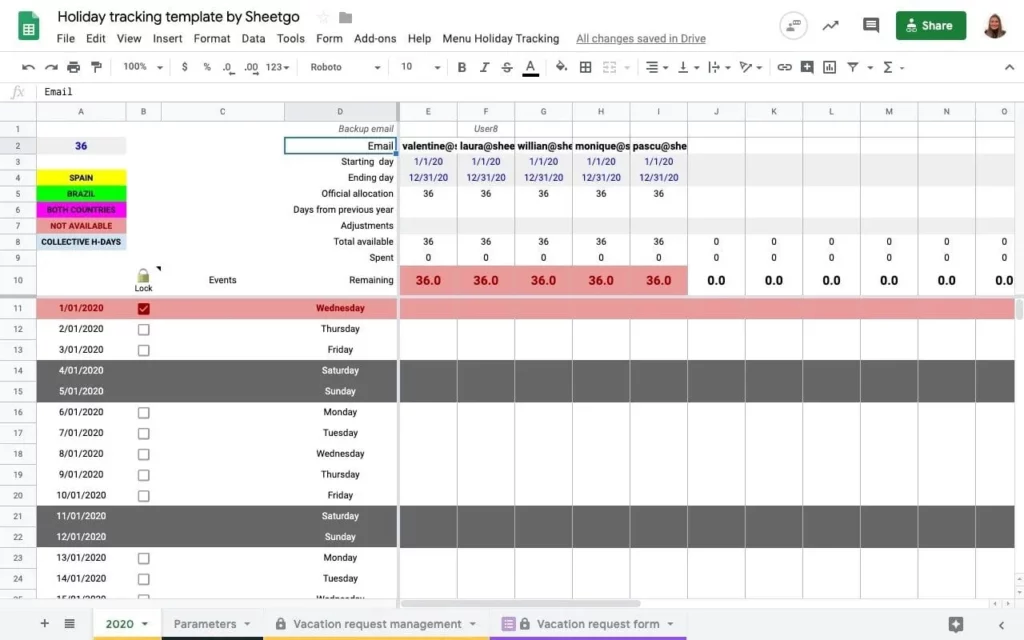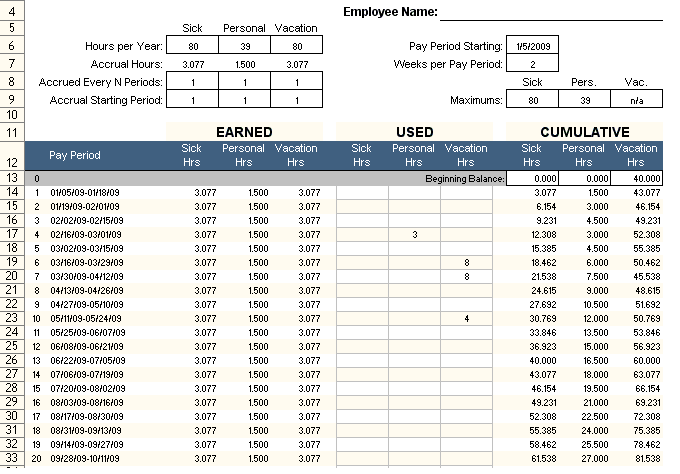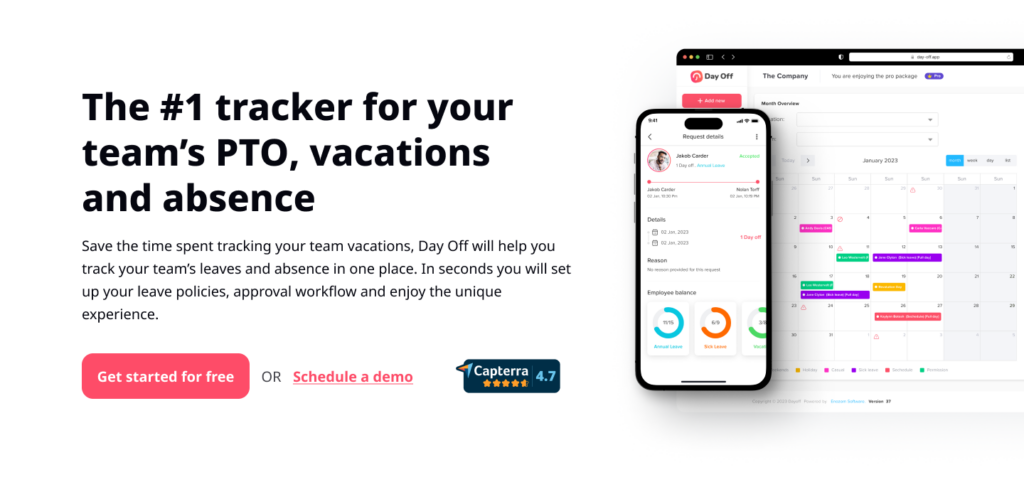Managing time off is one of the most important aspects of maintaining a healthy work-life balance. Whether you are an employee, team leader, or HR professional, tracking leave days effectively ensures that everyone in an organization stays organized, compliant, and well-rested.
A Leave Tracker Tool simplifies this process by allowing you to easily record, organize, and monitor days off, including vacations, public holidays, personal days, and sick leave. Instead of manually managing spreadsheets or trying to remember when your next break is, a digital leave tracker keeps everything centralized and up to date.
This comprehensive guide will walk you through how to set up, use, and optimize a leave tracker tool, along with best practices and answers to the most common questions employees and HR teams have about managing time off effectively.
Why Leave Tracking Matters
Before we explore the technical steps, it’s important to understand why proper leave tracking is essential. A leave tracker is more than a scheduling convenience, it’s a vital tool for maintaining productivity, fairness, and transparency in the workplace.
Here’s why it matters:
-
Workforce Balance: By knowing who’s on leave and when, teams can plan workloads and prevent gaps in coverage.
-
Employee Well-being: Tracking and encouraging time off helps employees avoid burnout and maintain motivation.
-
Policy Compliance: Leave trackers ensure that employees take the correct amount of leave as per company policy and labor laws.
-
Transparency and Fairness: A centralized system prevents disputes and ensures everyone is treated equally.
-
Accurate Payroll Management: Automated tracking helps HR teams calculate leave balances, unpaid days, and payouts accurately.
A well-maintained leave tracking system benefits both individuals and the organization by creating a culture of accountability and care.
Step 1: Choose the Right Leave Tracking Tool
The first step is to select a Leave Tracker Tool or calendar application that fits your needs. There are many options available, ranging from simple spreadsheets to advanced software platforms.
Types of Leave Trackers:
-
Digital Calendars: Tools like Google Calendar, Outlook, and Apple Calendar can be used for basic day-off management.
-
Dedicated Leave Tracker Apps: Platforms such as Day Off, BambooHR, Deel, and Factorial offer comprehensive leave management features for individuals and teams.
-
Custom Excel/Sheets Trackers: Ideal for small teams or freelancers who prefer manual control and customization.
Key Features to Look For:
-
Customizable leave types (vacation, sick leave, personal days, etc.)
-
Leave request and approval workflows
-
Integration with calendars and HR systems
-
Automatic leave accrual calculations
-
Notifications and reminders
-
Reporting and analytics capabilities
Choose a tool that aligns with your organization’s size, policies, and budget. For most businesses, an automated cloud-based tool offers the best balance of convenience and reliability.
Step 2: Access the Application
Once you’ve chosen your leave tracking tool, download or access it on your preferred device, whether that’s a desktop computer, tablet, or smartphone. Most modern tools offer multi-device compatibility, allowing you to manage your leave wherever you are.
Pro Tips:
-
Sign in with your company email address to ensure synchronization with your organization’s system.
-
Bookmark or download the mobile version for quick access.
-
If your company provides login credentials through an HR platform, connect through your employee portal.
Accessing the app easily ensures you can record time off requests and check balances quickly, preventing any last-minute scheduling issues.
Step 3: Set Up Your Leave Tracker Tool
Before using your tracker, take the time to configure it properly. A well-set-up system prevents confusion later on.
How to Set It Up:
-
Input Public Holidays: Add regional and national holidays manually or import them from Google Calendar if your tool supports integrations.
-
Define Leave Categories: Create categories for different types of time off — annual leave, sick leave, unpaid leave, maternity/paternity leave, and personal days.
-
Customize Policies: Adjust accrual rates, carryover rules, and approval hierarchies to align with your company’s policies.
-
Assign Teams and Locations: If you manage a company or department, divide employees by team, location, or shift for better organization.
-
Sync with Calendars: Connect the tracker with your corporate calendar or project management tools for seamless scheduling.
Taking the time to set up your tracker correctly ensures accurate tracking and saves countless administrative hours later.
Step 4: Enter Dates and Details of Your Time Off
With your system ready, it’s time to start logging your days off.
Steps to Follow:
-
Select Your Dates: Choose the specific date or date range for your day off using the calendar interface or date picker.
-
Add Details: Write a short description or note explaining the reason for your leave, such as “Family vacation” or “Medical appointment.”
-
Attach Documents (if applicable): Some tools allow uploading files like doctor’s notes or travel confirmations.
-
Select Leave Type: Choose from the predefined leave categories (vacation, sick leave, unpaid leave, etc.).
Adding these details ensures clarity for both you and your manager, streamlining the approval process.
Step 5: Save or Confirm Your Entry
Once you’ve entered all necessary information, finalize your submission. Depending on the tool, you may need to click “Save,” “Add,” or “Submit for Approval.”
After saving:
-
The request will appear in your calendar or dashboard.
-
If your company uses an approval workflow, your manager will be notified automatically.
-
You’ll receive confirmation once the request is approved or declined.
Always double-check your dates and ensure you’ve included all necessary details before confirming.
Step 6: Manage Multiple Days Off
If you have more than one planned absence, for example, a week-long vacation, use the multi-day entry option. Most digital trackers allow you to:
-
Select start and end dates in one entry.
-
Automatically calculate the total number of leave days.
-
Avoid weekends or public holidays automatically (if enabled).
You can also repeat this process for multiple vacations or personal days, making your entire year’s schedule visible at a glance.
Step 7: View and Review Your Days Off
Once you’ve entered your leave requests, view them in calendar mode or as a list. This visual overview helps you track when you’ll be off, plan upcoming work, and ensure you’re not overlapping with teammates’ schedules.
Benefits of Reviewing:
-
Prevent scheduling conflicts with major deadlines.
-
Identify trends in your leave patterns.
-
Plan future breaks strategically for maximum productivity.
A clear overview gives both employees and managers better control over time management.
Step 8: Sync Across Devices
One of the greatest advantages of using digital leave trackers is real-time synchronization. Syncing ensures you have access to your leave schedule on all devices, including your phone, tablet, or work computer.
Advantages of Syncing:
-
Immediate updates when changes occur.
-
Instant visibility of approved or pending requests.
-
Cross-device reminders for upcoming time off.
Syncing eliminates the risk of double-booking work or missing important leave days.
Step 9: Set Privacy and Sharing Preferences
Depending on the tool, you can decide who can see your leave schedule. Some users prefer privacy, while others share their calendar with colleagues for better coordination.
You may choose to:
-
Make your calendar public to your team to help with scheduling.
-
Share only specific events, such as approved vacation days.
-
Keep personal details private while still showing unavailable dates.
Balancing privacy with visibility ensures effective collaboration without compromising confidentiality.
Step 10: Keep Your Tracker Updated
Consistency is key. Whenever plans change, whether you cancel a vacation or add new time off, update your tracker immediately.
An outdated tracker can cause confusion for colleagues, managers, and even payroll. Regularly reviewing and updating your entries ensures that everyone is operating with the latest information.
Step 11: Use Color-Coding for Organization
Color-coding is an excellent way to quickly distinguish between different types of leave.
For example:
-
Green for vacation days
-
Blue for public holidays
-
Yellow for sick leave
-
Red for unpaid time off
Visual differentiation makes your calendar easier to read and helps you plan better around your upcoming leave.
Step 12: Plan Around Your Days Off
Your leave tracker is more than just a record, it’s a planning tool. Use it to schedule work deliverables, personal appointments, and travel plans efficiently.
Planning around your time off helps:
-
Avoid overcommitting before or after vacations.
-
Distribute tasks more evenly across your schedule.
-
Coordinate with teammates or clients in advance.
By using your leave tracker as part of your workflow, you not only stay organized but also maintain healthier boundaries between work and personal life.
Step 13: Integrate Company Policies and Teams
For organizations, most leave tracking tools allow deeper customization. You can:
-
Define company wide leave policies.
-
Create multiple teams or departments.
-
Assign different calendars based on location or time zone.
-
Import national holidays automatically from Google Calendar.
This setup ensures consistency and fairness across the organization, helping HR teams save time and maintain compliance.
Best Practices for Effective Leave Tracking
-
Update Promptly: Don’t wait until the last minute to record your leave, early planning reduces conflicts.
-
Review Regularly: Check your calendar weekly or monthly to ensure accuracy.
-
Communicate Clearly: Notify teammates or managers well in advance of long absences.
-
Leverage Reports: If available, use analytics to understand leave patterns and ensure fair workload distribution.
-
Encourage Transparency: Promote a culture where everyone feels comfortable requesting and tracking their leave.
Frequently Asked Questions (FAQ)
What is a Leave Tracker tool?
A Leave Tracker tool is a digital system that allows employees and HR teams to record, approve, and monitor different types of time off, such as vacations, sick days, and personal leave. It centralizes leave management, helping both individuals and organizations maintain accurate and transparent records.
Why is it important to track my days off?
Tracking ensures that your time off is organized, approved, and accounted for. It prevents scheduling conflicts, ensures compliance with company policies, and gives you a clear picture of your available leave balance.
Can I use a Leave Tracker for personal purposes?
Absolutely. Even if your company doesn’t use one, individuals can use tools like Google Calendar or Day Off Tracker to organize personal vacations, family events, and holidays. It’s a great way to manage work life balance effectively.
How do I choose the right Leave Tracker tool?
Consider factors like your team size, company policies, and feature requirements. For small teams, free tools or Excel templates may suffice. For larger organizations, cloud-based solutions with approval workflows, integrations, and reporting are more efficient.
Can I sync my Leave Tracker with other apps?
Yes. Many modern tools integrate with apps like Google Calendar, Outlook, Slack, and project management platforms. Syncing keeps everyone informed about upcoming absences in real time.
How does a Leave Tracker help managers?
Managers benefit from clear visibility into who’s on leave, making scheduling easier. They can approve or reject requests, analyze leave trends, and ensure fair distribution of workloads across the team.
Is my leave data secure?
Reputable tools use encryption and access control to ensure your data remains private and secure. Always choose a platform that complies with data protection standards like GDPR or ISO.
What if I need to change or cancel my day off?
You can edit or delete your entry anytime before the leave date. If it’s already approved, some systems may require re-approval from your manager. Always communicate any changes promptly to avoid confusion.
Can I track multiple types of leave in one tool?
Yes. Most tools let you categorize leave into multiple types, such as annual, sick, or unpaid leave. Each category can have its own policy, accrual rate, and approval process.
How often should I update my Leave Tracker?
Ideally, update it as soon as any changes occur. Keeping it current prevents errors and ensures your team always has the most accurate schedule.
Can I use color coding to differentiate leave types?
Yes, and it’s highly recommended. Assigning colors for different leave categories makes your calendar easy to interpret at a glance and improves organization.
How does tracking time off improve productivity?
When employees have clear visibility of their leave schedules, they can plan workloads efficiently, communicate absences early, and return from time off refreshed. It also reduces administrative confusion for managers and HR teams.
Is a Leave Tracker suitable for remote teams?
Definitely. Leave trackers are especially useful for remote or distributed teams where in-person communication is limited. They help teams stay synchronized across time zones and avoid miscommunication about availability.
What are the benefits of using Day Off Leave Tracker?
Day Off Leave Tracker offers simplicity, automation, and customization. It supports multiple leave types, integrates with calendars, automates approvals, and provides detailed reporting, making it ideal for businesses of all sizes.
Conclusion
A Leave Tracker tool is more than a digital planner, it’s a system for achieving clarity, balance, and efficiency. Whether you’re managing your own days off or overseeing an entire team, a well maintained tracker ensures transparency, fairness, and peace of mind.
By choosing the right tool, setting it up correctly, and keeping it updated, you can simplify the entire leave management process. From avoiding scheduling conflicts to ensuring compliance with company policies, a leave tracker empowers individuals and organizations to plan better, work smarter, and rest without worry.
Ultimately, tracking your days off is about respecting your time, and using it wisely.















